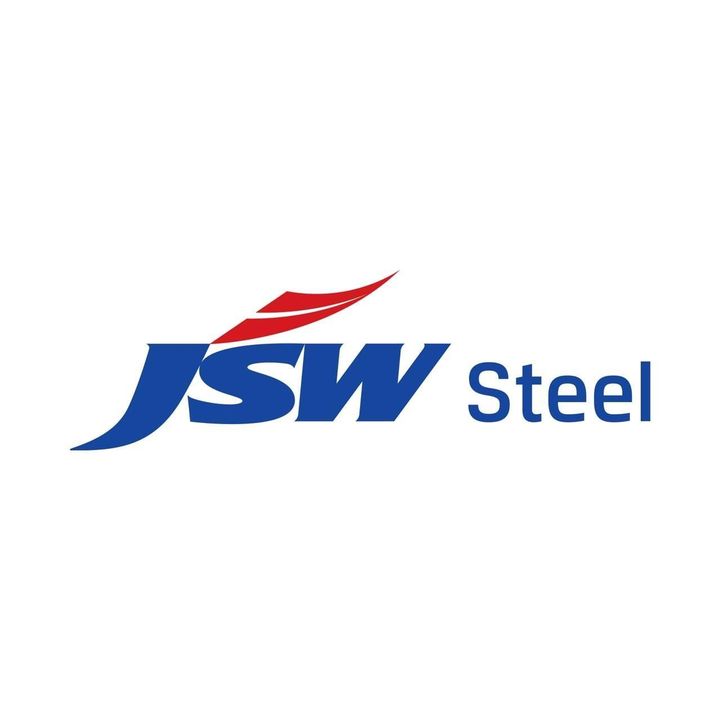Navigating the Currents of India's Infrastructure and Energy Landscape** **
July 25, 2024, 5:25 pm

Location: India, Maharashtra, Mumbai
Employees: 10001+
Founded date: 1982
Total raised: $1.9B

Location: India, Maharashtra, Navi Mumbai
Employees: 10001+
Founded date: 1966
Total raised: $22.14M
**
India's infrastructure and energy sectors are at a crossroads. Recent developments reveal a complex interplay of growth, challenges, and strategic investments. The landscape is shifting, and players in these sectors must adapt swiftly to stay afloat.
JSW Infrastructure has made waves by acquiring office space in Navi Mumbai for ₹88 crore. This move is more than just a real estate transaction; it’s a strategic anchor in a bustling market. Navi Mumbai is not just a location; it’s a hub of opportunity. The acquisition signifies JSW's commitment to expanding its operational footprint. It’s a chess move in a game where positioning is everything.
The new office space will serve as a nerve center for JSW’s logistics and infrastructure projects. It’s a calculated investment aimed at enhancing operational efficiency. As the company navigates the competitive waters of the infrastructure sector, this acquisition could be the wind in its sails.
Meanwhile, India’s fuel consumption is on the rise, with a 2.6% increase in June. This surge is driven by a rebound in aviation turbine fuel (ATF) and petrol usage. The aviation sector is awakening from its pandemic slumber. More flights mean more fuel. This uptick reflects a broader economic recovery, a sign that the country is shaking off the dust of the past few years.
However, this growth is not without its challenges. Reliance Industries Limited (RIL) and Bharat Petroleum Corporation Limited (BPCL) are bracing for a recovery in product cracks after a tough first quarter. The global economic slowdown has cast a long shadow over their operations. Fluctuating crude prices and lower refining margins have squeezed profits. Yet, both companies remain optimistic. They see a light at the end of the tunnel, a potential stabilization in demand that could restore their margins.
The energy sector is a delicate dance. Companies must balance supply and demand while navigating geopolitical tensions. The stakes are high, and the path is fraught with uncertainty. But for RIL and BPCL, hope springs eternal. They are poised to adapt and overcome, ready to seize opportunities as they arise.
In a different arena, ONGC Videsh is making bold moves by investing $60 million in Azerbaijan. This strategic investment aims to enhance its presence in the oil and gas sector. Azerbaijan is rich in hydrocarbon resources, a treasure trove for energy companies. ONGC Videsh is not just dipping its toes; it’s diving in headfirst. This investment aligns with its long-term strategy to capitalize on emerging opportunities.
The influx of foreign investment is a double-edged sword. While it can bolster local economies, it also poses challenges for domestic players. Rising steel imports are creating significant hurdles for local steelmakers in India. The CEO of JSW Steel has voiced concerns about the impact of these imports on competitiveness. Lower-priced imports are undermining the market position of domestic producers.
The steel industry is facing intense pressure. Rising production costs and fluctuating market dynamics are complicating the landscape. Local producers are feeling the squeeze, and the situation is dire. The CEO has called for a review of trade policies to protect domestic interests. Anti-dumping duties and safeguards could level the playing field. Without intervention, local steelmakers risk losing market share and facing financial strain.
Despite these challenges, there is a glimmer of hope. The Indian government’s focus on infrastructure development and manufacturing could drive steel demand. With the right support, the steel industry can navigate these turbulent waters. Strategic initiatives and protective measures are essential for long-term growth and stability.
The interconnectedness of these sectors is undeniable. Infrastructure, energy, and steel are the lifeblood of India’s economy. Each sector influences the others, creating a complex web of dependencies. As companies like JSW Infrastructure expand their operations, they contribute to the broader economic landscape. Increased fuel consumption fuels demand for steel, while energy investments bolster infrastructure projects.
In conclusion, India’s infrastructure and energy sectors are in a state of flux. Strategic investments, rising consumption, and competitive pressures are shaping the future. Companies must remain agile, ready to adapt to changing tides. The road ahead is fraught with challenges, but with foresight and resilience, there is potential for growth. The landscape may be rocky, but the journey is just beginning.
India's infrastructure and energy sectors are at a crossroads. Recent developments reveal a complex interplay of growth, challenges, and strategic investments. The landscape is shifting, and players in these sectors must adapt swiftly to stay afloat.
JSW Infrastructure has made waves by acquiring office space in Navi Mumbai for ₹88 crore. This move is more than just a real estate transaction; it’s a strategic anchor in a bustling market. Navi Mumbai is not just a location; it’s a hub of opportunity. The acquisition signifies JSW's commitment to expanding its operational footprint. It’s a chess move in a game where positioning is everything.
The new office space will serve as a nerve center for JSW’s logistics and infrastructure projects. It’s a calculated investment aimed at enhancing operational efficiency. As the company navigates the competitive waters of the infrastructure sector, this acquisition could be the wind in its sails.
Meanwhile, India’s fuel consumption is on the rise, with a 2.6% increase in June. This surge is driven by a rebound in aviation turbine fuel (ATF) and petrol usage. The aviation sector is awakening from its pandemic slumber. More flights mean more fuel. This uptick reflects a broader economic recovery, a sign that the country is shaking off the dust of the past few years.
However, this growth is not without its challenges. Reliance Industries Limited (RIL) and Bharat Petroleum Corporation Limited (BPCL) are bracing for a recovery in product cracks after a tough first quarter. The global economic slowdown has cast a long shadow over their operations. Fluctuating crude prices and lower refining margins have squeezed profits. Yet, both companies remain optimistic. They see a light at the end of the tunnel, a potential stabilization in demand that could restore their margins.
The energy sector is a delicate dance. Companies must balance supply and demand while navigating geopolitical tensions. The stakes are high, and the path is fraught with uncertainty. But for RIL and BPCL, hope springs eternal. They are poised to adapt and overcome, ready to seize opportunities as they arise.
In a different arena, ONGC Videsh is making bold moves by investing $60 million in Azerbaijan. This strategic investment aims to enhance its presence in the oil and gas sector. Azerbaijan is rich in hydrocarbon resources, a treasure trove for energy companies. ONGC Videsh is not just dipping its toes; it’s diving in headfirst. This investment aligns with its long-term strategy to capitalize on emerging opportunities.
The influx of foreign investment is a double-edged sword. While it can bolster local economies, it also poses challenges for domestic players. Rising steel imports are creating significant hurdles for local steelmakers in India. The CEO of JSW Steel has voiced concerns about the impact of these imports on competitiveness. Lower-priced imports are undermining the market position of domestic producers.
The steel industry is facing intense pressure. Rising production costs and fluctuating market dynamics are complicating the landscape. Local producers are feeling the squeeze, and the situation is dire. The CEO has called for a review of trade policies to protect domestic interests. Anti-dumping duties and safeguards could level the playing field. Without intervention, local steelmakers risk losing market share and facing financial strain.
Despite these challenges, there is a glimmer of hope. The Indian government’s focus on infrastructure development and manufacturing could drive steel demand. With the right support, the steel industry can navigate these turbulent waters. Strategic initiatives and protective measures are essential for long-term growth and stability.
The interconnectedness of these sectors is undeniable. Infrastructure, energy, and steel are the lifeblood of India’s economy. Each sector influences the others, creating a complex web of dependencies. As companies like JSW Infrastructure expand their operations, they contribute to the broader economic landscape. Increased fuel consumption fuels demand for steel, while energy investments bolster infrastructure projects.
In conclusion, India’s infrastructure and energy sectors are in a state of flux. Strategic investments, rising consumption, and competitive pressures are shaping the future. Companies must remain agile, ready to adapt to changing tides. The road ahead is fraught with challenges, but with foresight and resilience, there is potential for growth. The landscape may be rocky, but the journey is just beginning.
